After years of monastic life in a Buddhist forest monastery in the jungle of Thailand, Ernst Christen returned to the hyperactive Western world.
Although now a “convinced atheist,” Christen, a Swiss photographer, would find solace in the peace and tranquillity of the places we use to worship God, whomever He may be – the chapels, churches and cathedrals, and the mosques and synagogues too.
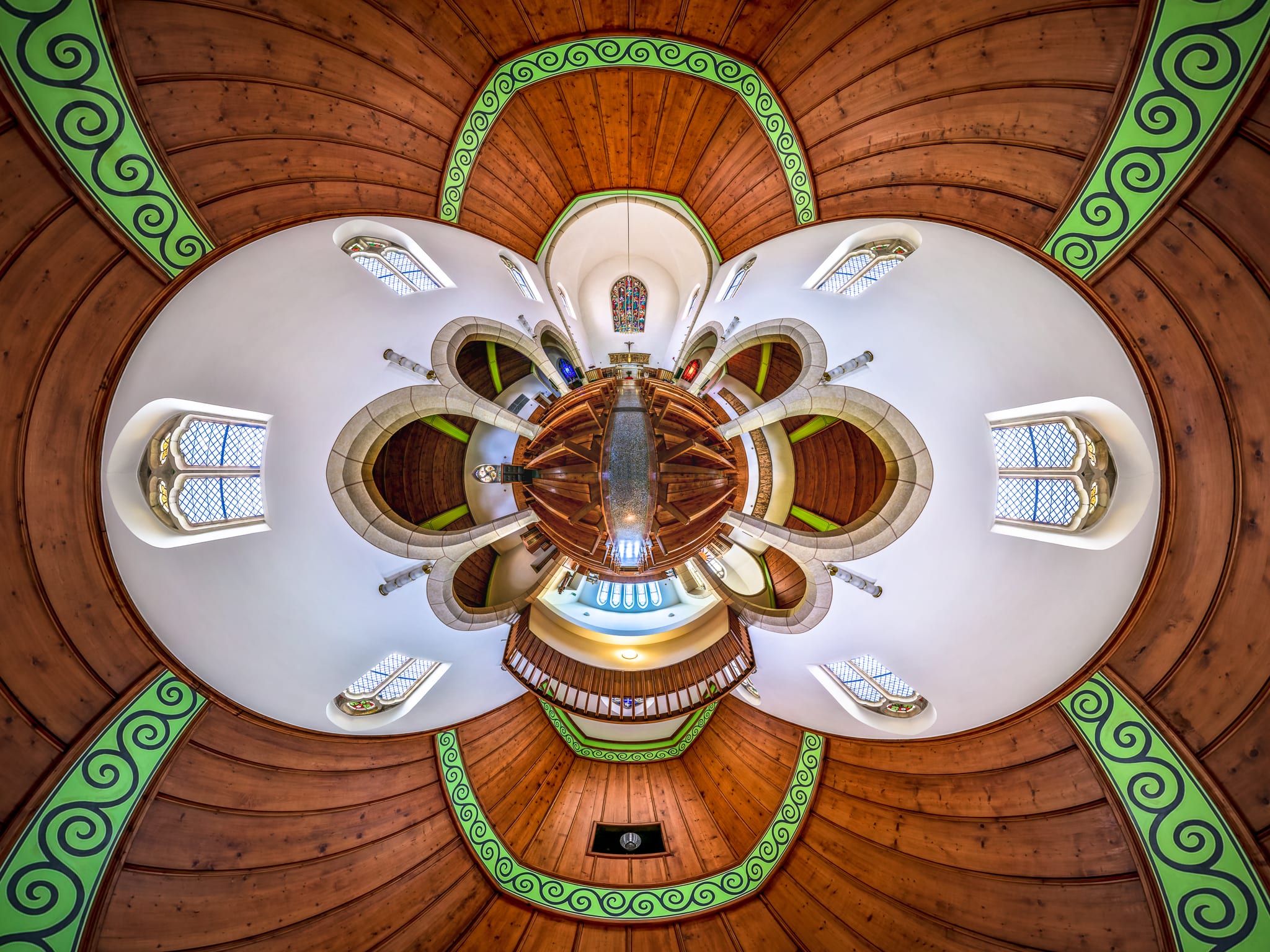
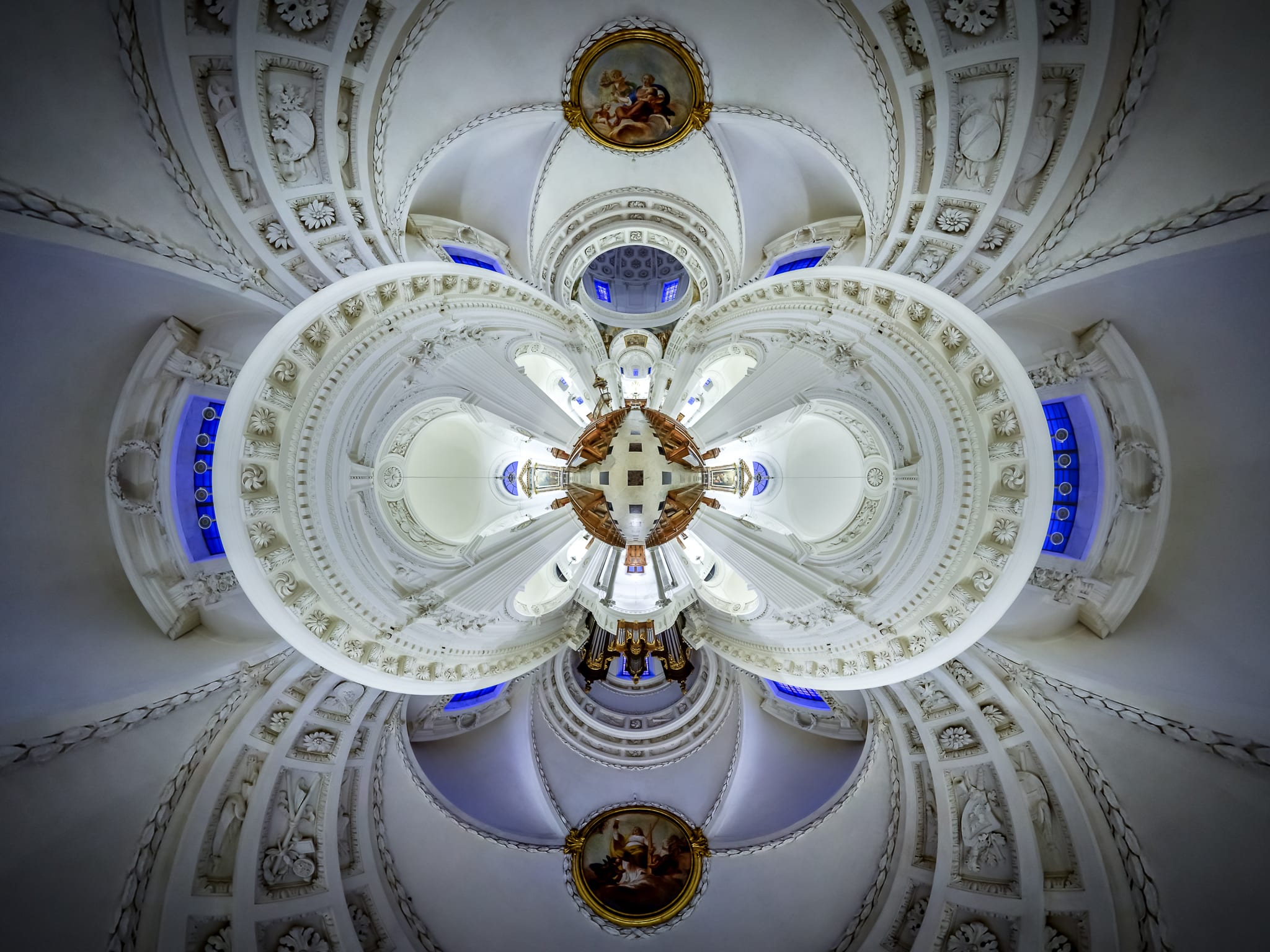
“I began to visit every temple, every mosque, every church and every synagogue that crosses my way,” he says.
In all the coming and going of visitors, Christen would find a quiet corner, and work on finding a way to capture the spirituality of the place. “It is not the building itself that I want to photograph,” he says. “What I am trying to capture is its noble and contemplative atmosphere.”
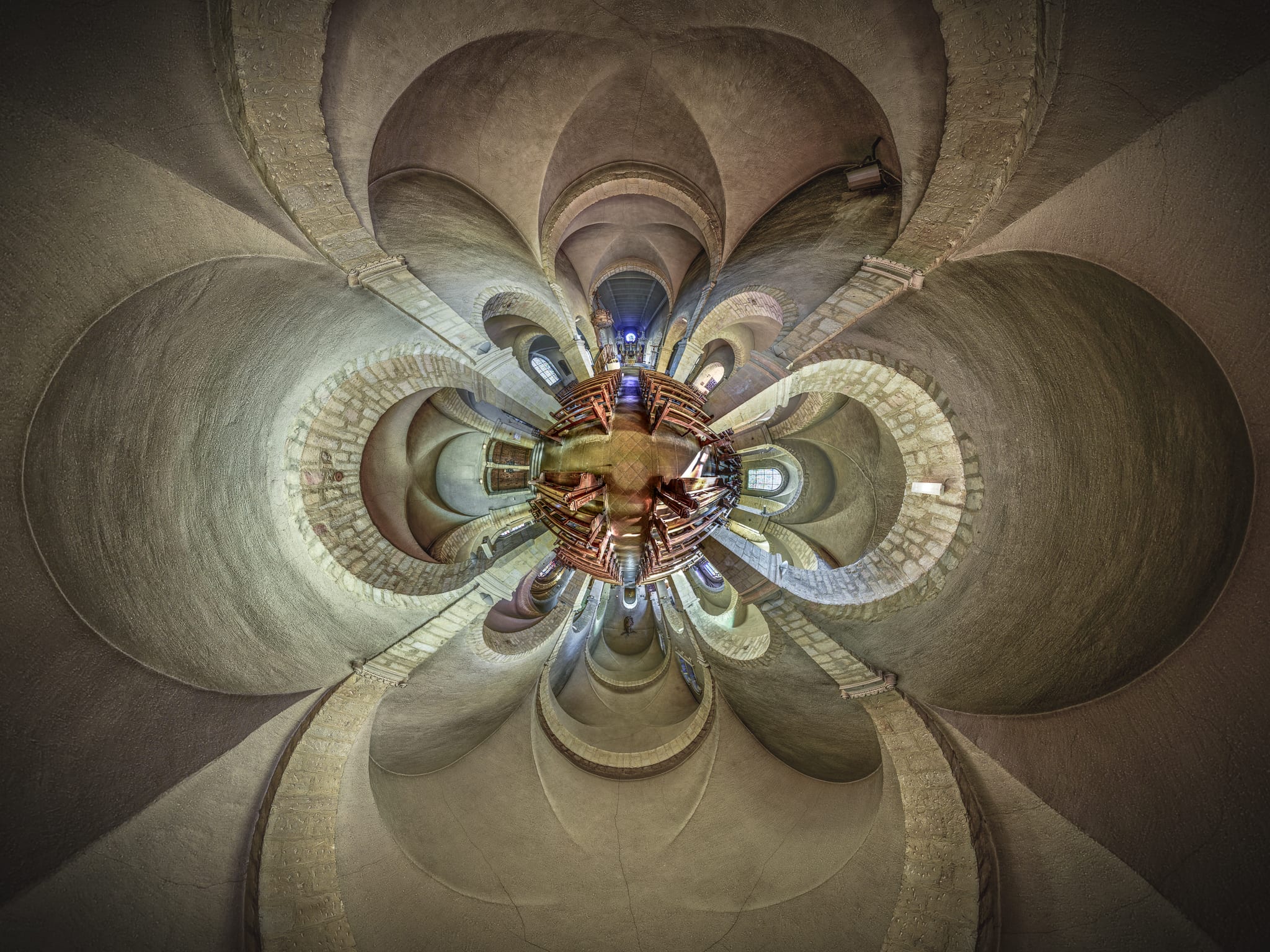
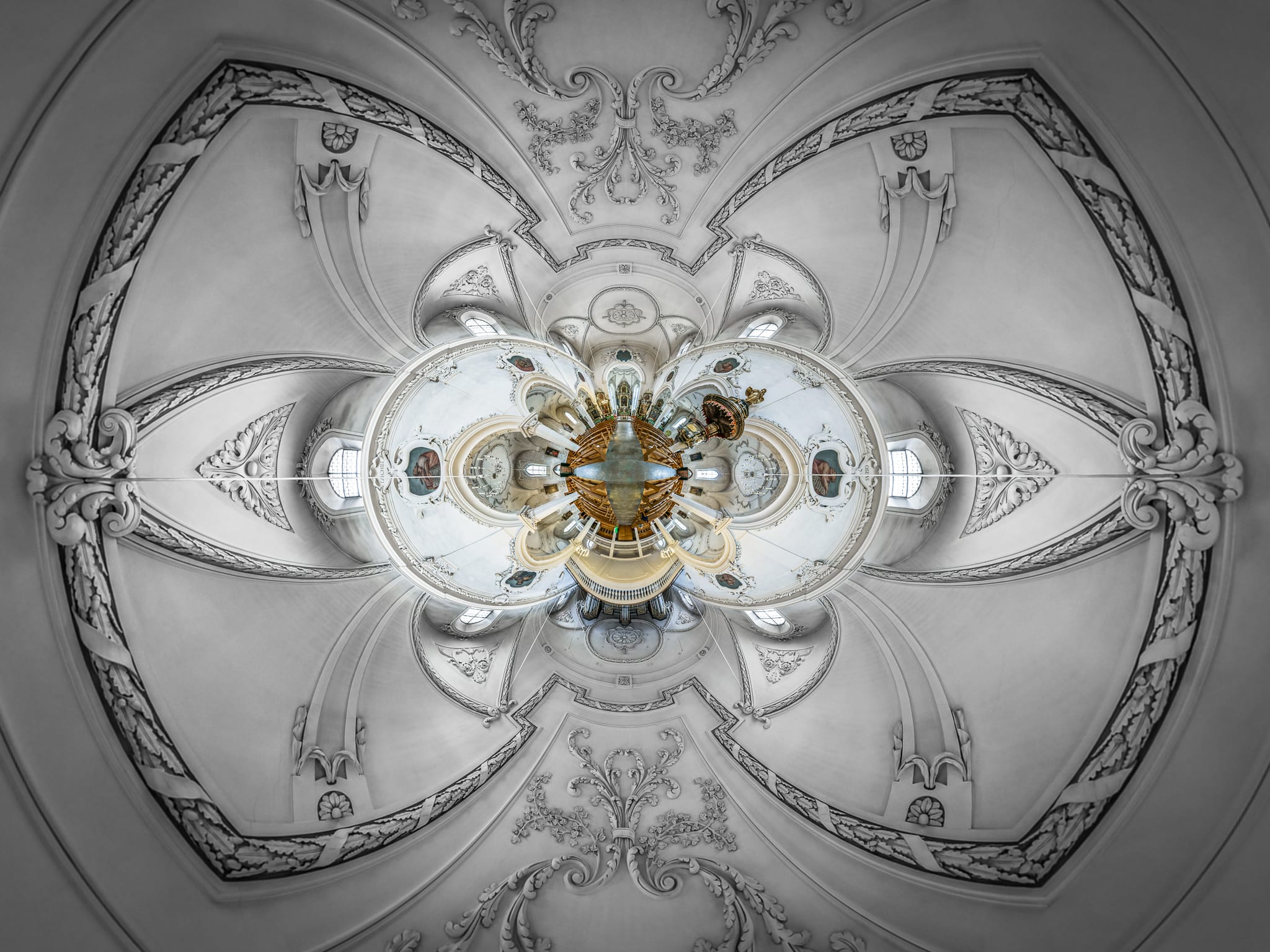
In doing so, he realised how difficult it is capture the architectural dignity and grandeur of such places to worship in the limits of a camera’s frame.
“Far too little gets finally on the picture, even with a 14mm or a fisheye,” he says. “So I realised there was actually no other choice than panorama photography.”
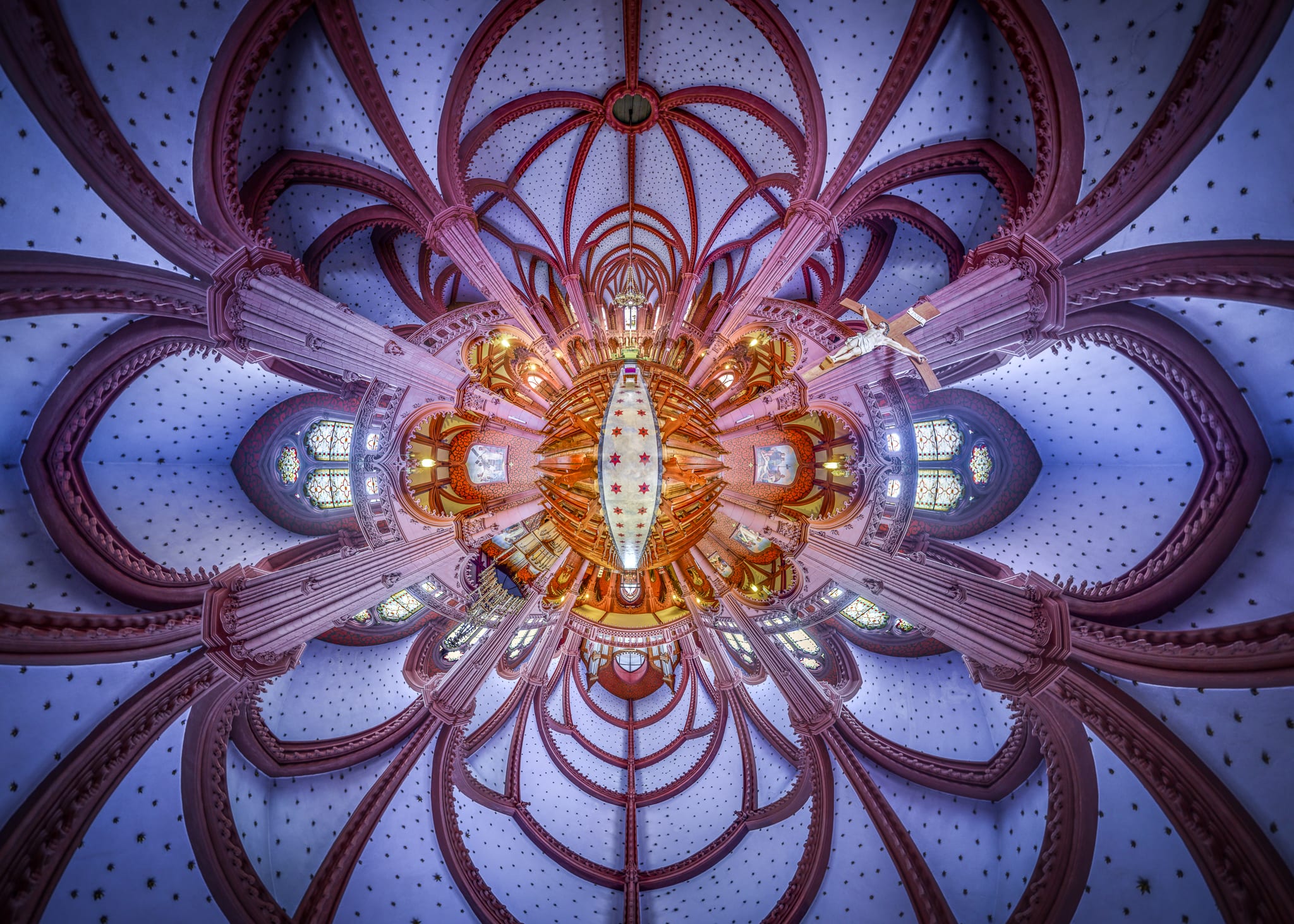
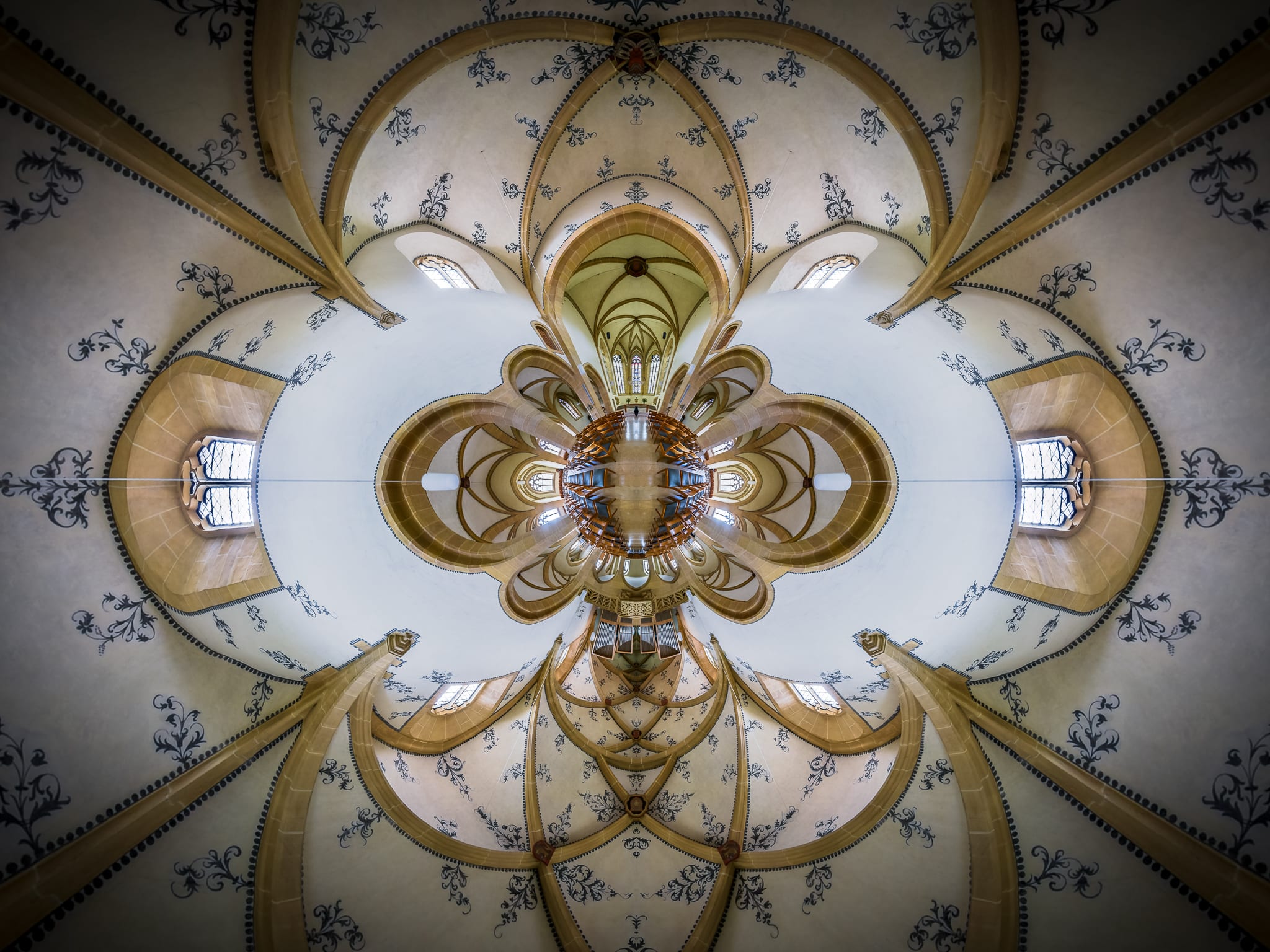
To create these segmented panoramas, the whole church room has to be photographed in multiple images in slightly overlapping fields of view. With a 20mm lens it takes 26 images, three rows of eight images plus one each, up and down.
A stitching software, which is able to assemble multi-row panoramas, was used to combine those images and to display it in various projections.
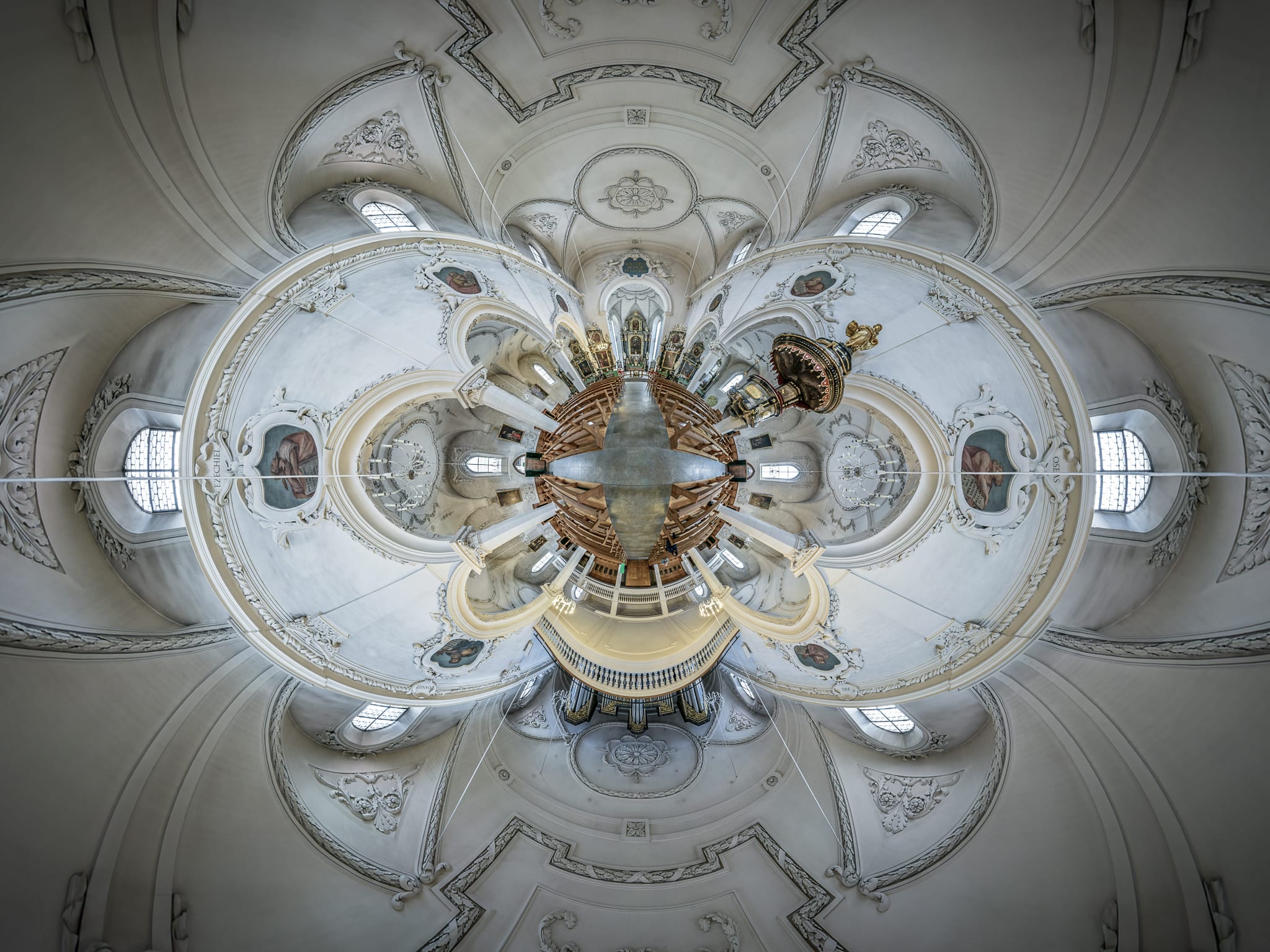
Photographing those 26 multiple images, the camera must be rotated about the centre of its entrance pupil in order to correctly stitched panoramas without parallax errors.
Most errors, he learnt, are due to an inaccurately aligned camera. “I learnt to align the camera on the tripod within the church, according to the geometry of the whole building,” he says.
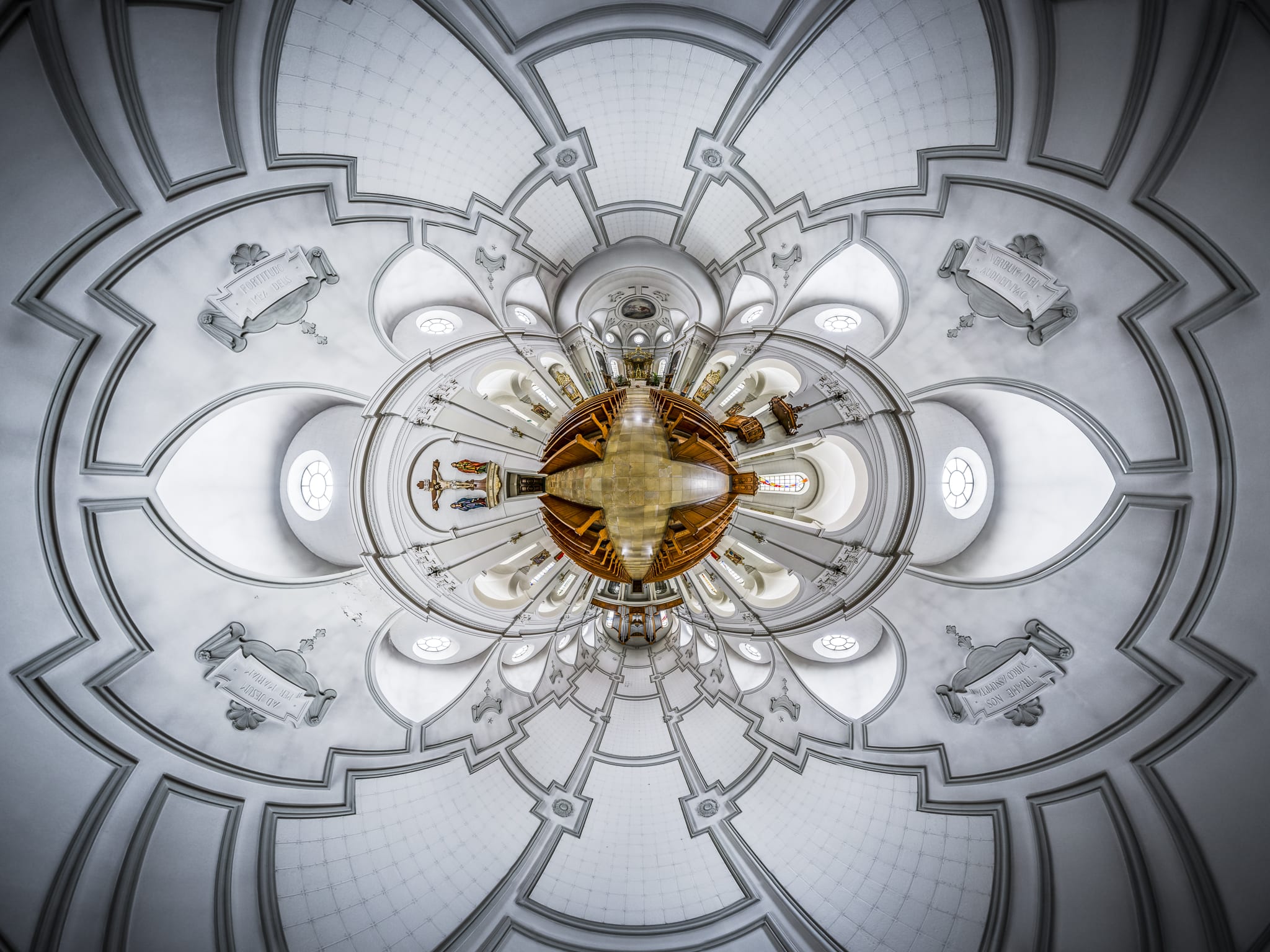
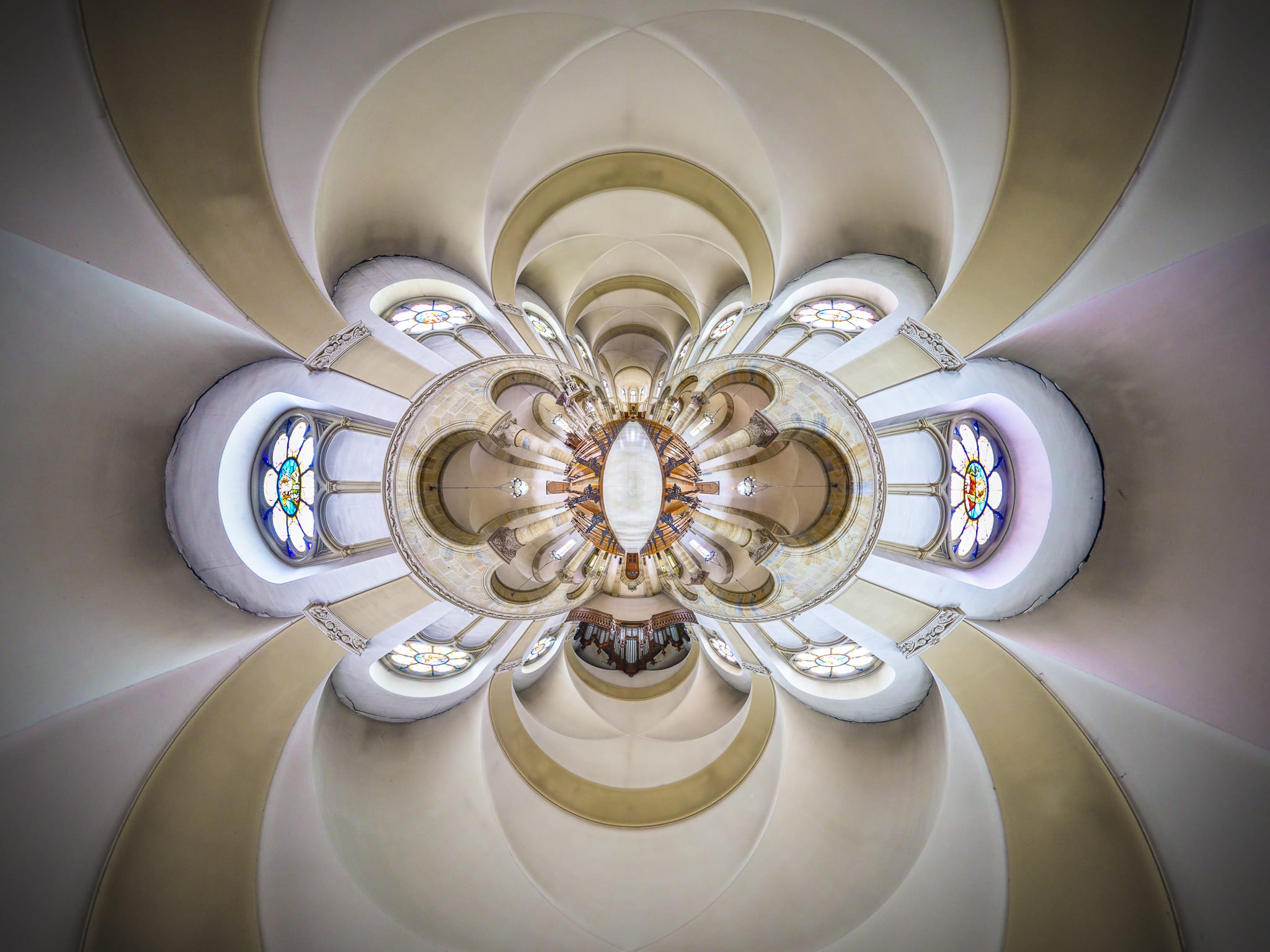
And his hopes for the series? “I hope I am able to reflect a little of the dignity, silence and grandeur of the church’s architecture in the final photo.”
See more of Christen’s photography here.
